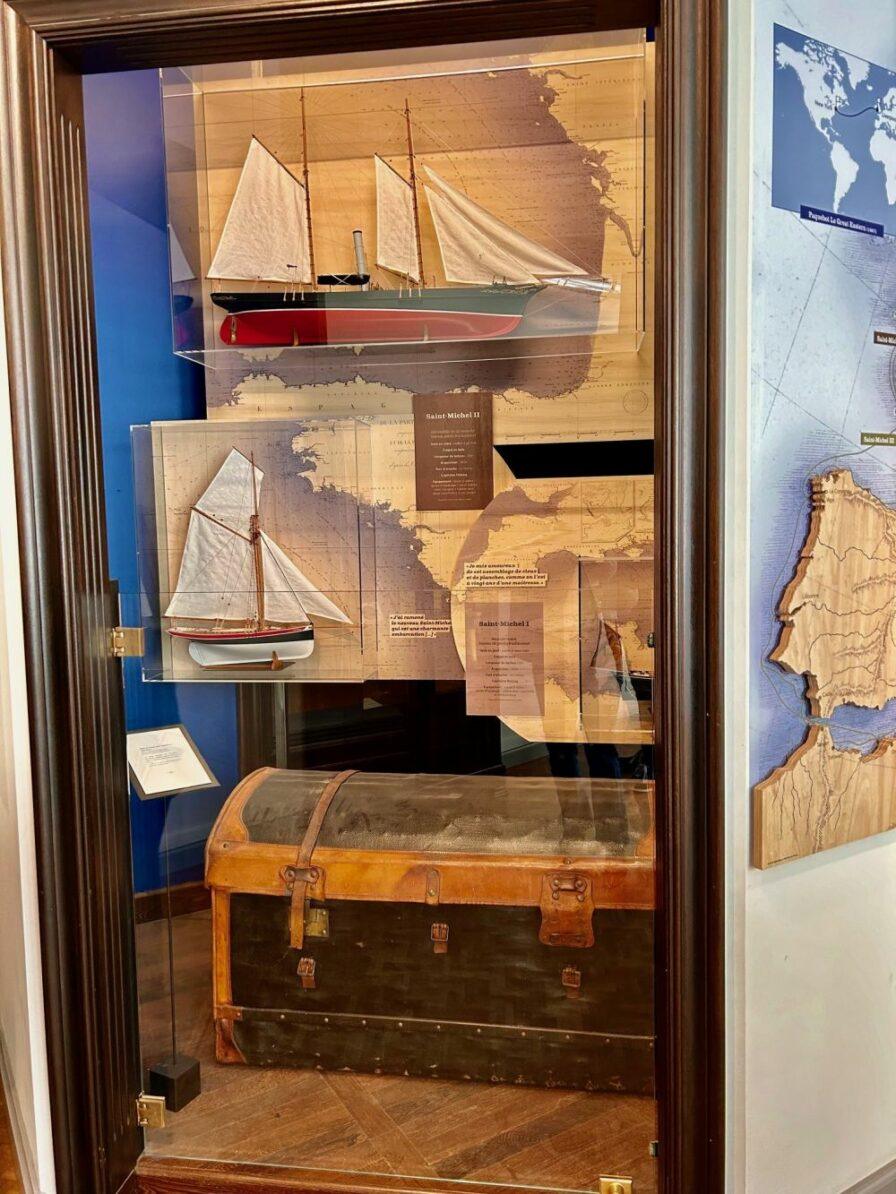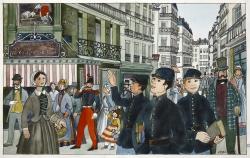
Jean Bruneau
Jules Verne, a pupil at Saint-Stanislas, in front of the “Rat Goutteux” shop sign in Basse-Grande-Rue
Watercolour on Canson paper, 1978
MJV C546 (purchased from the artist’s family, 2019)
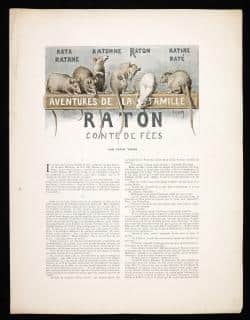
Jules Verne
Adventures of the Rat Family
Le Figaro Illustré, January 1891
MJV I1
This novella, written in 1887, was published in the Christmas issue of LeFigaro Illustré in January 1891 and reappeared in the collection Yesterday and Tomorrow edited by Michel Verne and published by Éditions Hetzel in 1910.
In this philosophical tale, the Rat family live in an imaginary world not unlike our own, but where all living beings are subject to the laws of metempsychosis (metamorphosis): an evolutionary ladder every step of which each living being must climb in succession until they reach the top step: humanity.
Jules Verne drew inspiration for the novella from Ovid’s Metamorphoses and La Fontaine’s Fables and examined the 19th century’s theories of evolution. How does the mollusc come to be at the bottom of the evolutionary ladder? Is the human body more complex than the bodies of the animals featured in the story?
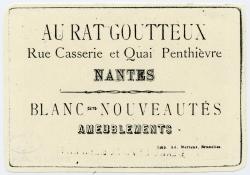
Advertising thumbnails for the Nantes shop
Au Rat Goutteux
Chromolithographs, Late 19th century
MJV CP141 to 144
When writing his novels and short stories, Jules Verne drew a lot of his material from current affairs, his circle and his environment.
Hence, he remembered a familiar figure from his childhood days when he wrote the Adventures of the Rat Family. A stone’s throw for the family home, on the Erdre’s quays, stood a draper’s shop whose name and motto was: “despite the envious, long live the Rat Goutteux!” (i.e. Gouty Rat) If you look up, you can still see the shop’s sign, on the corner of Cours des Cinquante Otages and Rue de la Barillerie where it once stood: a rat leaning on a crutch is pushing a cart loaded with rolls of cloth.
Jules Verne made it one of his story’s main characters. This fairy tale provided him with an opportunity to philosophise on the vanity of human ambitions. “Rat had become gouty and walked with a big crutch when the gout did not confine him to his big armchair.”

Raymond Ducrest de Villeneuve
Souvenirs personnels (Personal Memories)
Drawing on paper, 1930
MJV B233
Raymond Ducrest de Villeneuve (1859-1930) was the son of Anna Verne, the author’s sister, and Ange Ducrest de Villeneuve, Captain of Artillery.
In these memoirs, written shortly before his death, he provides us with an account of the Vernes’ private and family life. His text is accompanied by a few drawings of the Verne grandparents’ house in Chantenay. In Jules Verne’s day, the house, located facing Chantenay’s church, boasted an ideal viewpoint over the river: “Chantenay’s hillsides were all crops, gardens and orchards; there were a few rare old country houses surrounded by fruit gardens. Glens cut across the hills; paths ran through them shaded by great trees, beeches, centuries-old oaks, service trees… The ground floor on the entrance courtyard was the garden floor, as the Chantenay house’s main façade gave onto the gardens below Place de l’Église’s embankment”.
Like many of the city’s families, the Verne family spent the winter months in Nantes and went to the “countryside” for the rest of the year.
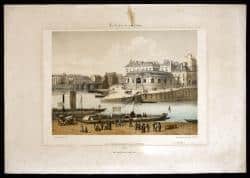
Léon-Auguste Asselineau
The Fish Market in Nantes
Lithograph from La France de Nos Jours
F. Sinnet, Paris, 1853-1856
MJV C160
This municipal fish market, inaugurated in 1851 and demolished in 1940, was located on the eastern tip of Île Feydeau (present-day Carré Feydeau). It was a horseshoe-shaped hall with its main door facing the river.
In front of the market was the landing-stage for the boats that ploughed the Loire. The Courriers, built by Gâche Frères in Paris, vied for passengers with the Union de la Loire’s boats. Their competition marked the peak of paddle-steamer river traffic. These boats, called pyroscaphes, were equipped with funnels that could be lowered, enabling them to pass under the city’s bridges.
In his autobiographical text Memories of Childhood and Youth, Jules Verne wrote, “…the Loire’s steamboats, known as “unexplodables” because they blew up slightly less often than the others…”. At the age of 12, it was aboard one of these pyroscaphes that he saw the sea for the first time: “A fine day at last, my brother and me, we had permission to go for a ride on pyroscaphe no. 2!… What joy! Enough to make you lose your head!”.
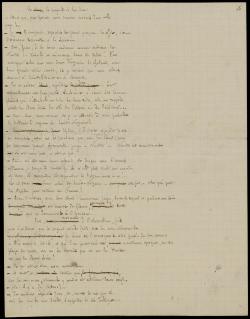
Jules Verne
The Mighty Orinoco
Autograph manuscript, 1893
MJV B90 – Exhibition print (Purchased with the support of Pays de la Loire Regional Council, Loire-Atlantique General Council and the Fondation de France, 1981)
For this novel, published in 1898, Jules Verne drew inspiration from the explorer Jean Chaffanjon’s Voyage aux Sources de l’Orénoque (Journey to the Sources of the Orinoco) published in 1889 in the magazine Le Tour du Monde. But the author also drew on his memories of Nantes, taking his readers from Chantenay near Nantes to the banks of the Orinoco in Venezuela. Chantenay, where the Verne family had their holiday home facing the church, source of the young Jules Verne’s dreams of travelling and permanent base where the writer would return with his family. Chantenay where, in The Mighty Orinoco, Jeanne de Kermor returns before setting off to South America in search of his father.
In some of the novel’s passages, the cruise along the Orinoco awakens memories of Ligerian landscapes in the characters: “Have we, by any chance, returned to our country?… Here, the Orinoco resembles the Loire… Yes, Jean, the Loire below and above Nantes! […] The resemblance is striking. Only, due to the stretches of grassland that extend beyond the two banks, it reminds me more of the Basse Loire near Le Pellerin or Paimboeuf…”.
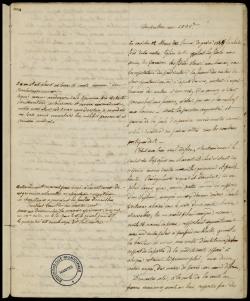
Jules Verne
A Priest in 1835
Autograph manuscript, 1847
MJV B85 – Exhibition print (Purchased with the support of Pays de la Loire Regional Council, Loire-Atlantique General Council and the Fondation de France, 1981)
Jules Verne was 19 years old when he started writing this novel. He chose his native city as the story’s setting and named his hero Jules Deguay, a young, recently graduated lawyer: was Jules Verne depicting himself? In addition, he drew inspiration from the construction of the new Saint-Nicolas basilica, his father being a member of the parish council and subscriber.
The storyline is evocative of 18th-century gothic novels, of which Victor Hugo was a fan idolised by Jules Verne. It’s a genuine piece of “noir fiction”: night, gloom, crime, sorcery… A macabre ambience in which the fantastical tale takes shape.
As regards the way the manuscript is written, it’s interesting to note that Jules Verne employed a methodology he was to use again in his Extraordinary Voyages. He drew a line down the middle of each page: he wrote his text on one side and left the other side free so he could include any necessary modifications. Here, unlike his other manuscripts, he wrote his text on the right and left the left-hand margin free
Plan of Nantes drawn up by Bilange
Lithograph
Prosper Sebir, Nantes, 1833
Exhibition print (Municipal Library, Nantes)
In 1833, the year in which this plan was drawn up, Jules Verne was five years old. The document gives us an idea of the city as they author knew it in his childhood.
Île Feydeau, in the south of the City, is where Jules Verne was born on 8 February 1828, in his maternal grandmother’s house at 4 Rue Olivier de Clisson. In the heart of the city’s port activity, between two arms of the Loire and its confluence with the Erdre; Île Feydeau, a huge stone jangada, a true floating city, was the first of the islands that would mark his body of work. The island theme is a common one in the Vernian world, and was also inspired by the robinsonades he read. The “merchant navy’s heavy sailing vessels” moored alongside the Loire’s quays “in two or three rows” nourished his dreams and inspired his first desires to escape.
In his autobiographical text Memories of Childhood and Youth, written in 1891, Jules Verne explains the reasons behind his “taste for stories in which the imagination is given free rein” and attributes his literary vocation to his native city.

Jules Verne, his life, his work
Marguerite Allotte de la Fuÿe
Kra publishing house, Paris, 1928
MJV A4646
This book, the first biography of Jules Verne, is the author’s copy belonging to Marguerite Allotte de la Fuÿe, Jules Verne’s niece by marriage. It contains a number of handwritten documents, photographs and original drawings, such as this watercolour sketch by Donatien Roy for the ballet Nemo and the Mysterious Pearl presented at events for the centenary of Jules Verne’s birth on March 12, 1928.
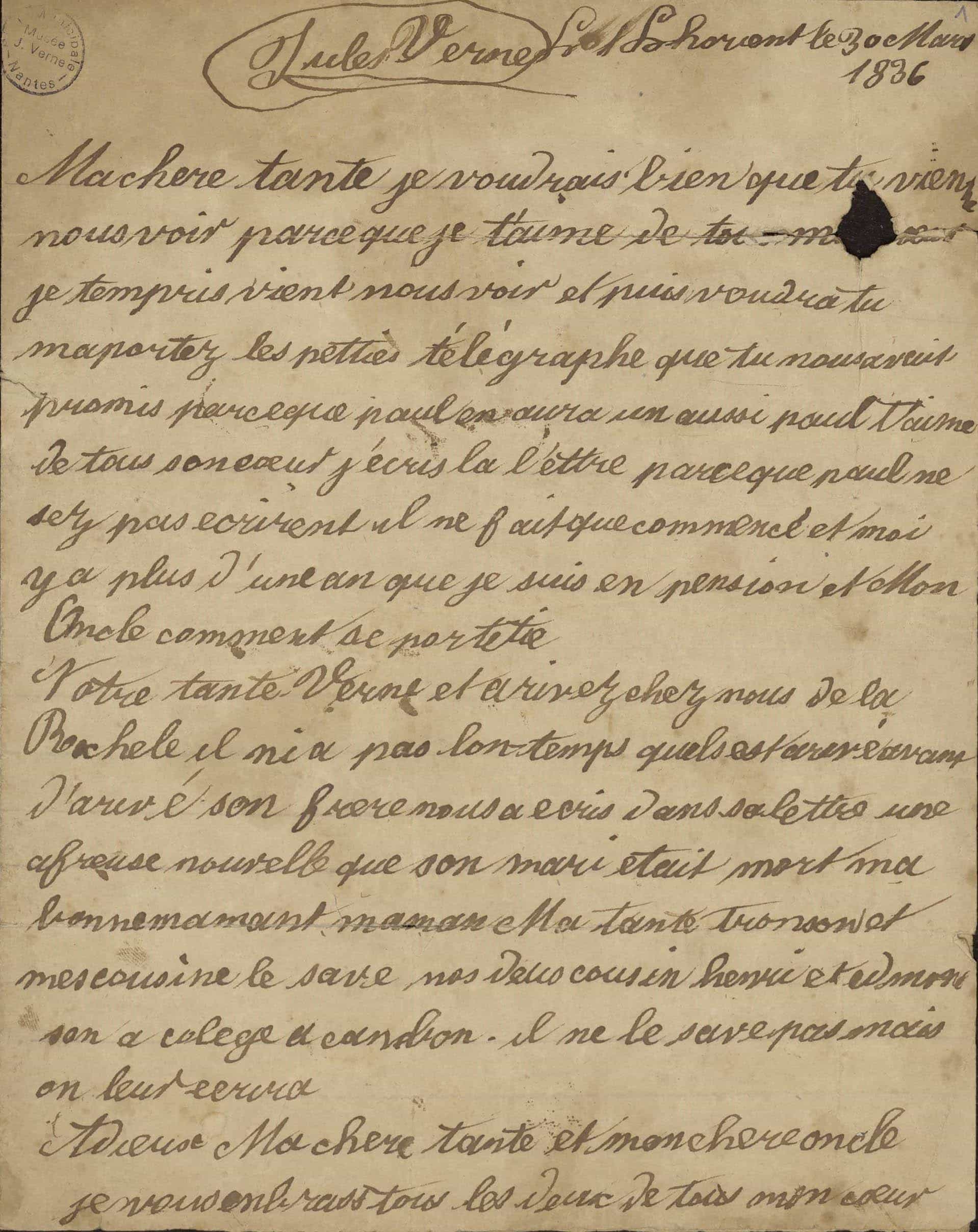
The first known letter from Jules Verne, written on March 30, 1836, to his aunt « Madame de Chateaubord »
MJV B18 – Exhibition print (donation from the Friends of the Nantes library association)
This letter demonstrates the author’s dedication in writing his novels as well as a burgeoning interest in technical progress, though mention of the telegraph. On the back his father Pierre Verne wrote: « I hereby certify that this letter is fully composed and written by Jules. It’s clear to see. »
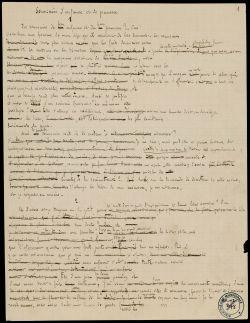
Jules Verne
Memories of childhood and youth
First page of the manuscript, 1891
MJV B78 – Exhibition print (acquired in 1981 with the support of the Pays de la Loire regional council, the Loire-Atlantique regional council and the Fondation de France)
This unique autobiographical text was written by Jules Verne for the American journal The Youth’s Companion (children’s magazine) and published on April 9, 1981. The author relates how his childhood in Nantes was instrumental to the emergence of his passion for travel.
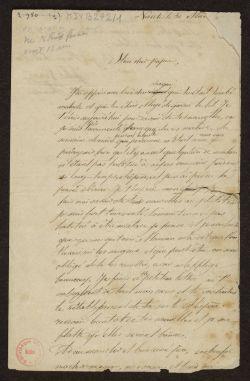
Handwritten letter from Jules Verne to his father, Pierre Verne, written in Nantes in around 1841.
MJV B272/1 – Exhibition print (donation from the family of Maxime Guillon Verne)
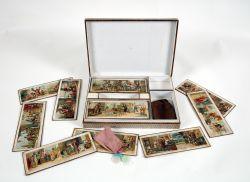
Instructive and fun game of « inventions and discoveries »
Paris, circa 1885
MJV G259
Often associated with the world of childhood and simple distraction, games are products of « popular culture ». But they provide information on the social, cultural and political achievements of an era. They also play an important role in the instruction of youth through their broad diffusion among the population.
